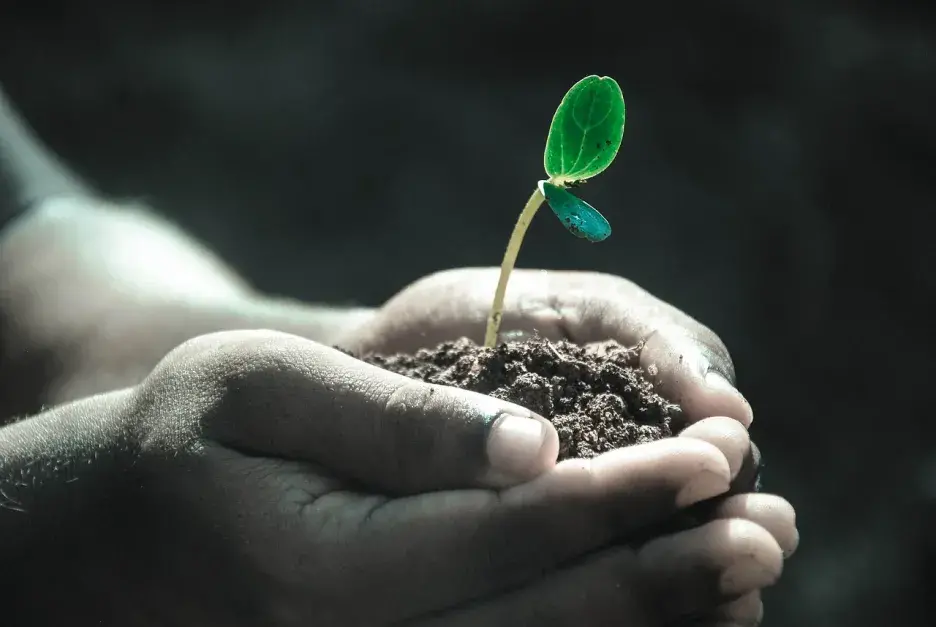Let's talk about watering!

Fiona Greenwold, Senior Regional Officer for the North East, tells us all about why planning how to keep your plants watered now will ensure you reap the rewards in the spring and summer terms.
"Why are you talking about watering at this time of year?" you might ask. "We’re just about to go into the autumn and winter, and it's pretty much guaranteed to rain!"
Good question! However, it’s worth talking about watering and the problem of keeping plants watered during the school holidays now so you can plan and prepare to ensure that:
- You save yourself a lot of work in the spring and summer
- Your gardening efforts more successful
- You can reduce the problem of watering during the school holidays
This information sheet is designed to give you the right information and points to consider to help you have success with your school garden.
Unless you are growing some amazing drought-tolerant plants like cacti and succulents, the plants you have in your school garden are going to need water to survive.
Firstly, there is no prescriptive procedure for watering. Plants are like people and they all have differing needs depending on their intrinsic physiology, the environment they’re growing in and the current weather conditions.
We are going to break this advice down into three initial sections depending on the environment you could be growing plants in:
- a greenhouse
- a fruit or vegetable garden
- an ornamental or wildlife garden
We'll also give some general advice on how to reduce the need for watering in the first place and some tips and tricks to help you stretch out the time between watering sessions.
Much of this advice is good to follow anyway, as water is an expensive resource. Wherever possible, we strongly encourage you to get rainwater capture systems in place near your growing areas. Using rainwater barrels to harvest the rainwater off your roofs is an essential part of sustainable gardening practices.
Growing in a greenhouse
If you want to grow plants in a greenhouse you'll need to plan to have a human or some humans involved during the school holidays. Unless you have a reliable automatic watering system, it still needs to be checked and monitored by a human on a daily basis, depending on what you're growing and where you're growing it in the greenhouse.
Vegetable crops, like tomatoes, cucumber and peppers, are 'water hungry' and need to be kept adequately watered at all times. Irregular watering will lead to crop failure which is disappointing to experience after the effort of sowing, planting and care previously put in. Planting directly into a slightly raised bed in a greenhouse reduces the fluctuations in soil moisture that occur when plants are grown in pots.
Fruit and vegetable gardening
If you want to grow fruit and vegetables you will also need to plan to have a human involved during school holidays. Again, depending on what you are growing, this could be as little as doing a weekly check and water (which would be suitable for fruit bushes), but if you were growing salad crops, this would need more frequent watering.
Ornamental or wildlife gardening
Ornamental plants such as flowers and shrubs generally need less looking after, and if you time your initial planting right, you may not need to do any additional watering at all!
General top tips to reduce the need for watering
Add organic matter to your soil
Organic matter is material like compost, well-rotted manure, spent mushroom compost, soil improver, composted bark, composted wood chip, municipal compost and leaf mould. This organic matter is able to hold extra moisture and so can acts like a mini reservoir distributed throughout the soil, providing a more even supply of water to the plants and reducing the need for you to add more water.
Plant in the autumn
Many may think that spring and summer are the best times to plant up your garden, but autumn is actually the best time. In the spring and summer, newly-planted plants are especially vulnerable to dying due to drying out. They have generally just come from living in a garden centre or plant nursery, where experts are ensuring their water needs are met every day. To be suddenly planted out in the big wide world and left to get on with it before they have managed to get their roots down into the soil can be a recipe for failure.
On the other hand, if you plant up your garden in the autumn, the weather is more reliably wetter so it is very likely you won’t have to do any extra watering at all. The other benefit of planting in the autumn is that the soil is warm. This means plants keep growing and start to get their roots deeper down into the soil and so get themselves established in their new position ready for the following spring, when they'll have adapted to their new environment.
Much mulching!
Another technique to reduce the need to water is to mulch your plants – simply a covering over the soil. It helps to keep the water in the soil rather than let it evaporate, so reduces the need for watering. As well as using materials listed above in the organic matter section, you can use materials like newspaper and cardboard as mulch. As an organic mulch breaks down, it also enriches the soil.
Manage moisture
Remember to stop and enjoy the job of watering by slowing down and treating watering as a mindful moment. Gardening has so many positive benefits for mental health. Listen to the sounds around you in the background as you water and reflect on how much good you are doing by growing fruit and vegetables, or providing more space for nature. You are a champion for a better future!